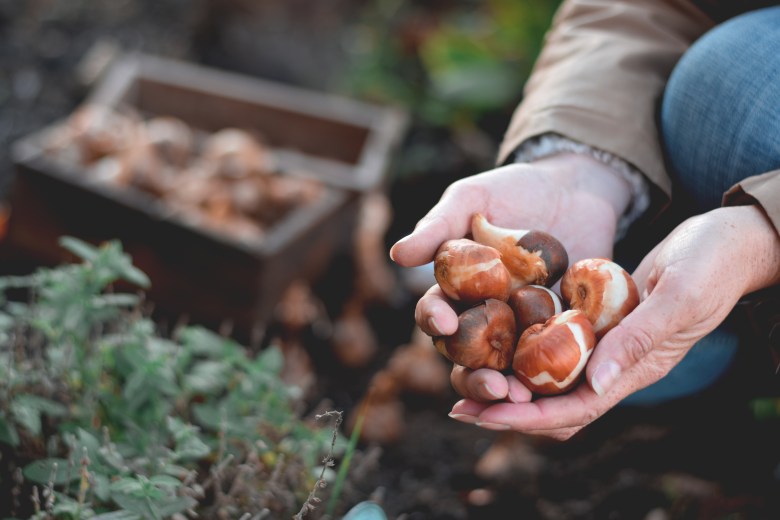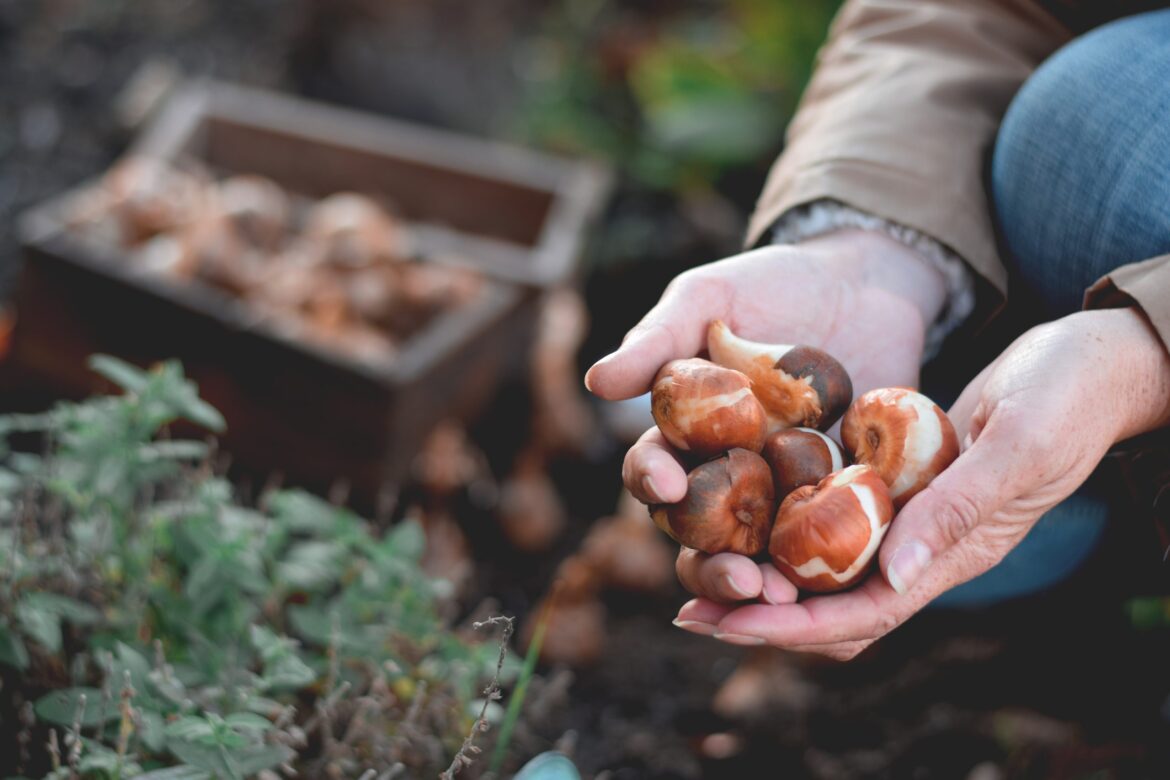 Bulbs that bloom in the spring should be planted into the ground in the fall. Photo courtesy Getty Images.
Bulbs that bloom in the spring should be planted into the ground in the fall. Photo courtesy Getty Images.
Do you have a gardening question? The UC Master Gardeners of Santa Clara County can help. Our volunteers are part of the University of California’s Cooperative Extension program, and we are trained to use research-based information to educate our fellow residents on home horticulture, pest management, and sustainable landscape practices specific to our area.
Our monthly “Ask a Master Gardener” column will answer your questions and offer tips. Have a question? Email lifestyle@embarcaderopublishing.com.
Answers to common gardening questions
How much mulch is enough?
Many gardeners err by only putting down a thin layer of mulch 1 or 2 inches deep, but that isn’t enough. The Garden Professors blog says, “A minimum of 3 inches of a coarse-textured mulch is needed to restrict sunlight from reaching the soil and prevent weed seed germination. Any less than this will enhance, not prevent, weed growth.” While some weeds may still sprout through a 3-inch layer, there should be fewer, and they should be easier to pull. Mulch also helps prevent weed seeds from reaching the soil, thus reducing maintenance. Plus, eliminating weeds preserves soil moisture. As an extra benefit, organic mulch feeds the soil as it breaks down. Check out these mulch myths for more information.
Will pine needles acidify my soil?
The short answer is no; this is a common garden myth. While it’s true that pine needles are acidic when they drop from the tree, even a thick layer won’t make much difference in your soil pH. They break down naturally and the microbes (decomposers) in the soil neutralize them. In fact, pine needles are a good mulch material because they tend not to form a dense mat, they stay in place during heavy rain, and they take longer to break down than other organic mulches. Here are other garden myths, debunked by experts.
Upcoming gardening events
UC Master Gardener gardening events are taking place throughout the county this month. Here are some of them, with more listed on our events page.
Weeds, Wildlands, & Wildfires – Wednesday, Nov. 5, Online
Last Call for Fall: A Garden Winterization Workshop – Saturday, Nov. 8, San Jose
Landscaping Basics – Saturday, Nov. 8, Mountain View
Roses: Fall and Winter Care and Pruning – Saturday, Nov. 8, San Jose
California Native Plant Sale – Saturday, Nov. 15, San Jose
Unlocking the Mysteries of Seed Catalogs and Seed Packets – Sunday, Nov. 16, Palo Alto
MCP Succulent Holiday Sale – Wednesday, November 19, San Jose
Autumnal Antagonists: Pests During Fall in California – Thursday, Nov. 20, Online
How Invasive Pests Are Managed in California – Wednesday, Dec. 3, Online
What’s wrong with this plant?
Who hasn’t watched in dismay as a plant starts to wilt, turn brown or fall prey to mysterious pests? We can help! Start by reviewing these questions to help with diagnosis. Access the University of California’s Plant Problem Diagnostic Tool to narrow down possible issues. Use Integrated Pest Management—a process to solve pest problems caused by insects, pathogens, weeds or vertebrates while minimizing risks to people and the environment. There’s a wealth of information and help on the UC IPM website. Still need help? Submit a question and photo online to our Help Desk.
Is it OK to walk on wet soil?
The clay soils that dominate our area are particularly susceptible to compaction, especially when they have received a lot of rain. These soils are characterized by small mineral particles. Hence squeezing out the air spaces makes it more difficult for plant roots and soil organisms to get the oxygen they need to flourish. Try to avoid walking on or using heavy equipment on soil that is wet. Digging in wet soil can also destroy the structure, breaking up useful soil aggregates and earthworm tunnels. Try to wait until the soil is moist, not wet or dry, for easiest tillage. If you must walk or stand on the soil, use a board to distribute your weight over a broader area. Mulch can also create a bit of a cushion and help minimize compaction. Here’s more about wet soil.
Should I plant spring-blooming bulbs now?
Bulbs that bloom in the spring are planted into the ground in the fall. These include those that are technically corms, rhizomes, tubers, or tuberous roots in addition to true bulbs. Examples are babiana, crocus, daffodils, freesia, hyacinths, iris, ixia, sparaxis, and tulips. They can go into the ground in groups, into pots, or be tucked in amongst other plants. Arrange the bulbs in informal clusters – some gardeners just toss the bulbs into prepared soil and dig them in where they fall! Put them in a place that doesn’t stay wet because they will rot with too much water. It is important that the soil has good drainage. They flower best in full or filtered shade.
Be sure to plant them with the pointy side up because new growth will come from that point. A rule of thumb is to plant them twice as deep as the diameter of the bulb but follow instructions for the specific flowers. Water them in at planting time.
Here are more tips for growing bulbs, including which should be planted now and which should wait for winter and early spring.
Would you like to ask a UC Master Gardener about a plant problem? Submit questions to our Help Desk online.
You can also subscribe to our monthly Tips and Events newsletter. San Mateo residents can also find gardening advice on the UC Master Gardeners of San Mateo and San Francisco website.Follow us on Facebook, Instagramand TikTok.
Most Popular


Comments are closed.